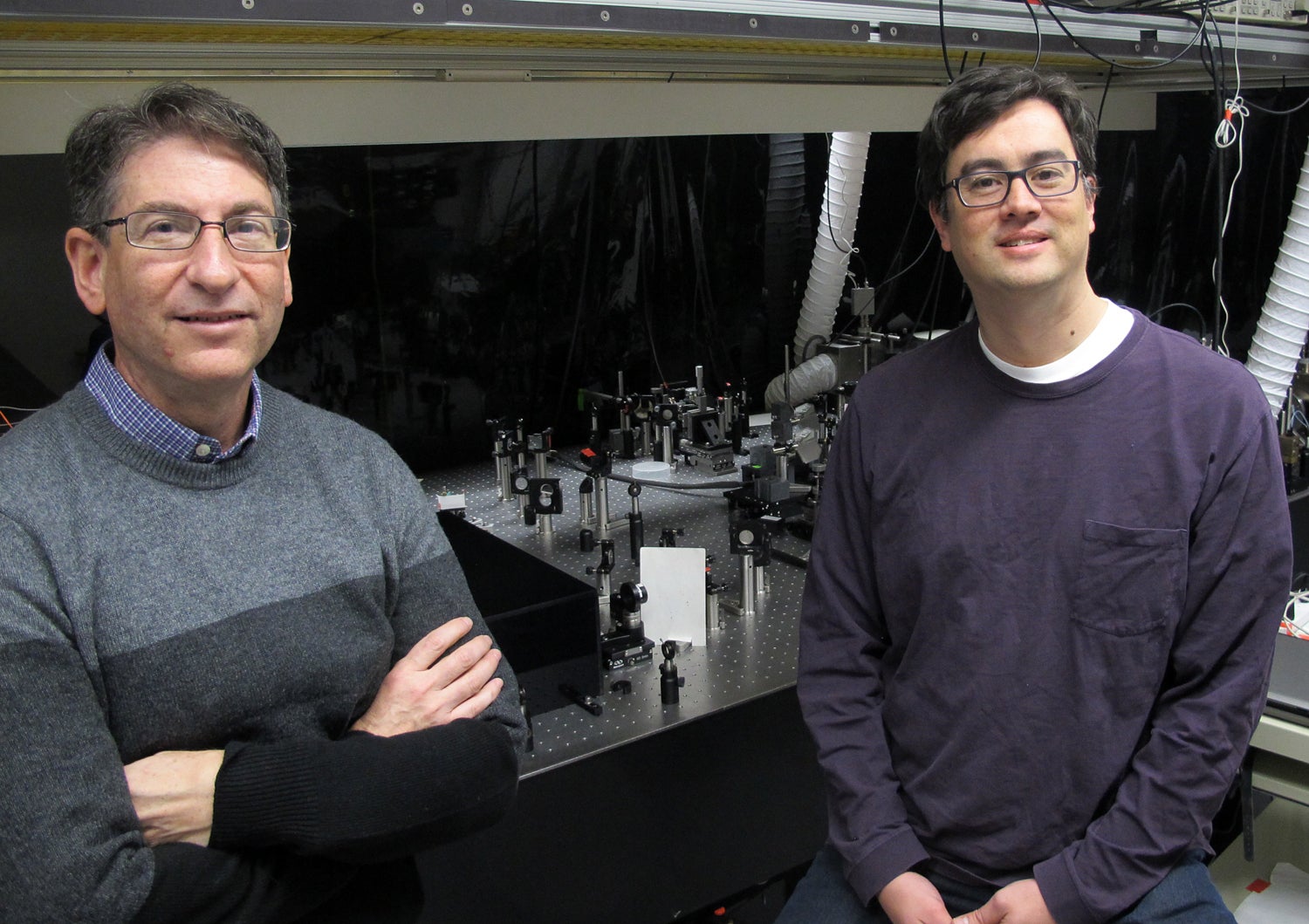The Marcus group develops and applies novel optical and spectroscopic methods to study a range of biophysical problems. These include the conformational changes of biomolecular machines as they interact with and manipulate DNA, the coherent motions of optically excited electronic-vibrational quantum states in coupled molecular networks, and the properties of quantum entangled photon pairs used to excite molecules.
To elucidate the conformations of protein-DNA complexes, and to monitor their time dependent behavior, we develop and apply single-molecule and ultrafast fluorescence spectroscopic methods, which are sensitive to the electronic couplings between fluorescent probe chromophores. By studying the delocalized electronic excited states (excitons) in coupled chromophore networks, we are able to observe functionally important structural changes and kinetic steps involved in DNA replication and other biologically important processes. In some experiments, we detect optical signals from single protein-DNA molecular complexes, which provide us with detailed information about the mechanisms of protein-DNA interactions. Much of our biophysical related work is in collaboration with Chemistry Professor Peter von Hippel. In collaboration with Michael Raymer in Physics, we are studying the ultrafast dynamics of excited electronic-vibrational states in coupled molecular networks, which are structurally ordered in DNA. We are also developing new approaches to nonlinear optical spectroscopy that uses time-frequency entangled photon pairs as a resource to study quantum states of light interacting with a well-defined molecular network system.

